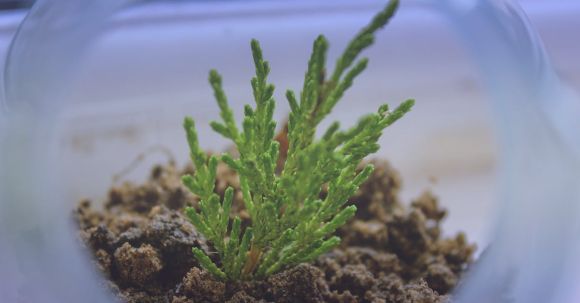The earth’s terrestrial ecosystems are not just a backdrop for our daily lives; they play a crucial role in maintaining soil health. These ecosystems, which include forests, grasslands, and wetlands, are essential for sustaining life on our planet. In this article, we will explore the ways in which terrestrial ecosystems act as guardians of soil health and why it is important to protect and conserve them.
The Importance of Soil Health
Soil health is the foundation of a thriving ecosystem. It supports the growth of plants, provides habitat for countless organisms, and plays a vital role in filtering water. Healthy soil is rich in organic matter, which helps retain moisture and nutrients, preventing them from being washed away by rain or irrigation. It also provides a supportive structure for plants’ roots, allowing them to anchor themselves and access the nutrients they need to grow.
Erosion Control
One of the key functions of terrestrial ecosystems is erosion control. The roots of plants in forests, grasslands, and wetlands help bind the soil together, preventing it from being washed away by rainfall or blown away by wind. In forests, the dense canopy of trees acts as a shield, reducing the impact of raindrops on the soil surface. Grasslands, with their dense root systems, are particularly effective at stabilizing soil, preventing erosion even in areas with high rainfall. Wetlands, with their water-absorbing vegetation, act as natural sponges, absorbing excess water and preventing runoff.
Nutrient Cycling
Terrestrial ecosystems also play a vital role in nutrient cycling. When plants and animals die, their remains are broken down by decomposers such as bacteria, fungi, and insects. These decomposers convert organic matter into nutrients that can be absorbed by plants, completing the nutrient cycle. Without this recycling process, nutrients would become locked away in dead matter and unavailable for new growth. By maintaining healthy populations of decomposers, terrestrial ecosystems ensure that nutrients are continuously cycled, promoting the fertility of the soil.
Biodiversity Support
Biodiversity is another important aspect of soil health, and terrestrial ecosystems are key in supporting diverse communities of plants and animals. The intricate web of life in these ecosystems ensures that there are organisms capable of performing various ecological roles. For example, earthworms help to aerate the soil, improving its structure and nutrient availability. Bees and other pollinators are crucial for the reproduction of many plants. Predatory insects and birds help control populations of pests. By conserving terrestrial ecosystems, we can protect the biodiversity that is essential for soil health and ecosystem resilience.
Conservation Challenges
Despite their importance, terrestrial ecosystems are facing numerous threats. Deforestation, urbanization, and intensive agriculture are all taking a toll on these ecosystems, leading to soil degradation and loss of biodiversity. Climate change is exacerbating these challenges, with increased temperatures and altered rainfall patterns. It is crucial that we take action to protect and conserve terrestrial ecosystems to ensure the health of our soils and the sustainability of our planet.
Conclusion: Protecting Our Guardians
Terrestrial ecosystems are the guardians of soil health, playing vital roles in erosion control, nutrient cycling, and biodiversity support. By conserving these ecosystems, we can ensure the long-term health and productivity of our soils. It is imperative that we address the threats facing these ecosystems, such as deforestation and climate change, through sustainable land management practices, reforestation efforts, and the protection of natural habitats. Only by working together to protect and restore terrestrial ecosystems can we safeguard the health and resilience of our soils for future generations.





